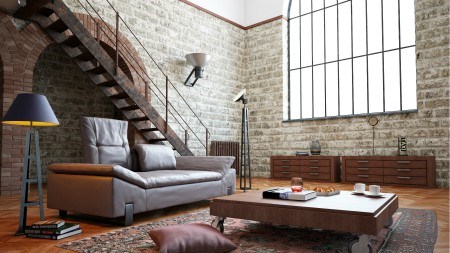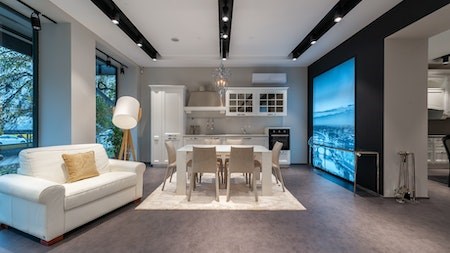Deciding on how to furnish your rental property should be a priority decision for you as a landlord. But, does it renting it out furnished or unfurnished work better for your ideal tenant?
Furnishing your rental property
Finding the right fittings, and making sure everything is spick and span, are just some of the tasks you’ll need to undertake as a landlord. There are, however, some big decisions to be made too. Deciding how you’ll rent out your rental property - furnished or unfurnished - is a big one.
Your furniture, your way
If you do decide to rent out your rental property, fully furnished, there may be some cons to it, although many of these can be taken care of before your new tenant moves in.
If you’re considering renting out your rental property as a fully furnished home, we recommend:
- Increase the deposit: Ensure that you add an extra deposit amount, on top of the rental deposit, to cover any breakages or losses, so that you’re able to replace anything that goes missing.
- Make a checklist: Include a full checklist on your lease agreement, detailing the furnishing, fittings, and household goods that are included in renting your rental property as a furnished home.
- Extend the terms and conditions: Add in extra clauses to your lease, that outline and govern the ways your furniture and other items are to be used by the tenant.
- Increase your inspections: Whether your rental property is managed by an estate agent, or handled directly by you, you should be conducting regular inspections to ensure the property is being well-maintained. Because you have invested more money and time into furnishing your rental property, you should inspect the property on a slightly more regular basis, as there are more things to check for. Don’t forget to set a regular appointment with your tenant to enable regular inspections.
Your rental property
The type, size, and facilities attached to your rental property could also help you make your mind up about whether to rent it out furnished or unfurnished. Smaller apartments are often more attractive to renters when furnished. Notably, too, smaller apartments are easier to maintain and furnish. If you’re renting out a granny flat, it may make sense to rent it out fully furnished. Alternatively, if your rental property is a stand-alone house and garden, you may want to rent it out unfurnished.
Corporate rentals
If your rental property is best suited for C-suite executives and business travellers, you should definitely consider renting it fully furnished. Typically, corporate rentals attract higher rental prices, which can be great for your bank balance, and your sanity. You’ll also be relatively assured upfront that your prospective tenant is, at the least, gainfully employed and not doing so badly for themselves! Moreover, corporate rentals are often handled by the tenant’s employer, giving you an extra level of assurance when it comes to rental and deposit payments. Typically, a corporate rental works better for business travellers, who won’t be fully relocated to a different province, city, or country. That’s why a corporate rental is most often fully furnished and provides your tenant with everything they need to live and work; they just need to bring their clothes.
Student accommodation
If your rental property is situated near an educational institution and can accommodate several people, you may want to consider renting it out as student accommodation. Student accommodation can be a good way to earn rental income, but it is usually expected that the rental property will be fully furnished.
Read more: Your student accommodation checklist
Holiday homes
Renting out a holiday home, or utilising it as an Airbnb, to generate rental income, will demand that your rental property be furnished. Short-term leases may also demand a certain level of furniture and facilities.
Read more: Things to consider when buying a holiday home
Your ideal tenant
Of course, when considering whether to furnish your rental property or not, you should keep your ideal tenant in mind.
When trying to make the decision on furnishing your rental property, consider the following:
● Your ideal tenant’s income bracket: Furnished rental properties usually attract slightly higher rental prices, when compared with similar properties in the surrounding neighbourhood. You may want to tailor your rental price to fit this type of ideal tenant. ● Your lease expectations: Renting a fully furnished rental property is not common for longer-term leases, but this may depend on the size and nature of your rental property. A tenant who is looking for a long-term lease has, most often, created and built up their own set of assets and furniture, so a furnished rental property may not be an attractive option for them. ● Your ideal tenant’s family: Typically, a furnished rental property won’t attract a family or couple who are well into their life journey. That’ll mean they’re most likely to have accumulated their own furniture and personal assets by now, so a furnished rental property may not be an attractive option for them.
The final decision
Your final decision on furnished vs. unfurnished rests entirely on you, of course. Once you’ve weighed up the pros and cons, assessed your rental property, and have a good idea of what your ideal tenant looks like, you can make your choice. If you’re still uncertain about what will work best for your little slice of the property market, consider furnishing your rental property, and then giving prospective tenants the option to rent it unfurnished, at an appropriate lower rental price.
Good luck, landlord! For more advice and guidance on how you can make the best decisions for your rental property, visit our Advice Centre.





